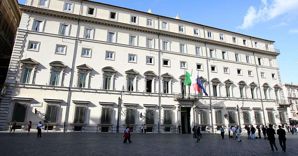
->
the state will help banks in distress. In the aftermath of the repartee between Prime Minister Matteo Renzi and German Chancellor Angela Merkel on government interventions for the lenders, the Wall Street Journal reveals that in fact the quarrel was just a facade, because behind the scenes Italy had obtained what he wanted. That is, a public guarantee in support of banks’ liquidity. This does not mean that the bail-in is called into question. It continues to apply the directive to which the bank bailouts should fall on the shoulders (in order) of shareholders, subordinated bondholders, senior bondholders and finally of account holders for stocks above 100,000 Euros. But Article 32 of the Directive also provides for exceptions to allow public aid. These are possible when it comes to “prevent or remedy a serious disturbance in the economy and preserve financial stability.”
And this is the point on which he has relied on the Commission EU to grant Italy a public guarantee in support of banks’ liquidity. The Brexit determined precisely that the situation mentioned by the Directive, that is a ‘serious disturbance of the economy “. And any intervention to support banks there would be a way to “preserve financial stability.” The system of ‘precautionary support “granted to Italy, however, is subject to two conditions: will be activated, if necessary, only until December and solvent banks.
according to the Wall Street Journal, it would be a state guarantee of 150 billion liquidity.
the Commission was keen to stress, so that someone could think of “preferential treatment »for Italy, that this scheme is in line with the guidelines of 2013 and similar operations are already operating in several EU countries. Brussels also announced that Italy has asked to authorize the provision of liquidity to solvent banks in case of need. The Commission spokesman explained that “there is the expectation that such a need to use it. ‘
This explains the words of President Juncker when he said that the Commission he would do anything to “avoid a bank run”, reiterating, however, that “for the moment there is no danger.” Palazzo Chigi came out reassuring messages. It was leaked that the new tool “will not necessarily be used in the short” but “it is an important political fact” this green light from Brussels. The Directive on the banking crisis and the bail in states that ‘in order to preserve financial stability, especially in the case of systemic liquidity shortage, the State guarantees on liquidity facilities provided by central banks or State guarantees on newly issued liabilities to remedy a serious disturbance in the economy of a member State should not trigger the resolution framework when certain conditions are met. ”
That is that “the safeguards of the state obtain the approval under the guidelines on state aid and are not part of a wider package of help, and that the use of the guarantee measures should be strictly limited in time. ” No coincidence that any work should be done by December of this year. According to Public Policy bail out banks in crisis might switch the type tools “Tremonti bonds” (so Padoan bond) or with a direct recapitalization of Cassa Depositi e Prestiti, in which to put money from the Treasury. While Germany thunders against public aid to banks, the International Monetary Fund puts the Deutsche Bank in the dock as the number one danger for the stability of the world financial system. Exposure to derivatives of about fifteen times the German GDP, Deutsche Bank is the institution that is the largest potential source of external shocks to the world. The German bank, which failed with the Santander Federal Reserve stress test, is, according to the IMF, “the most significant net contributor to systemic risks in the global systemically important banks, followed by HSBC and Credit Suisse.”
->
